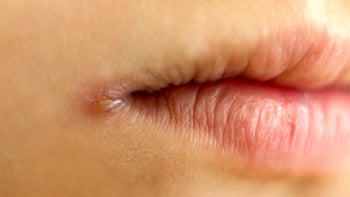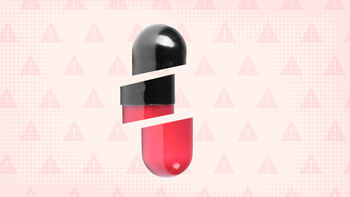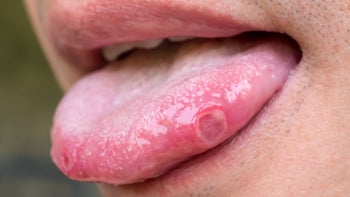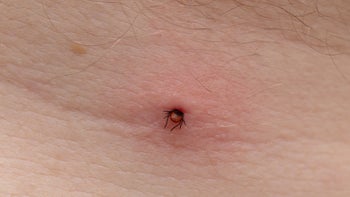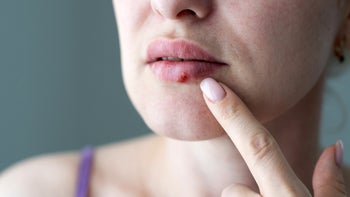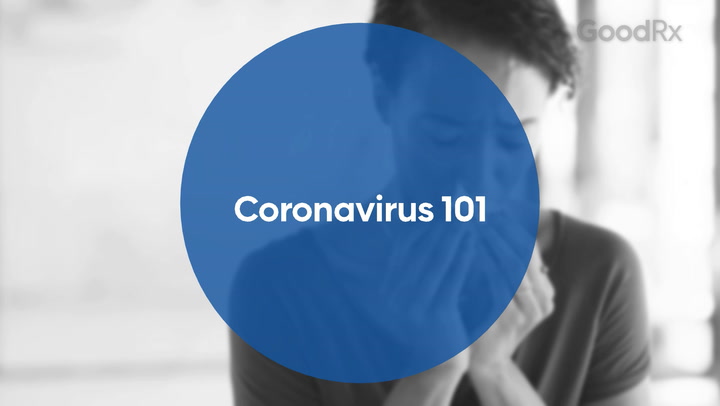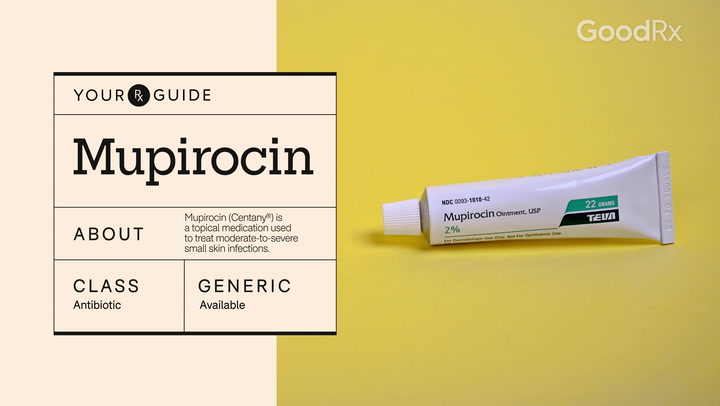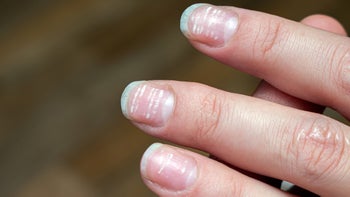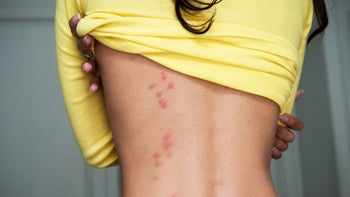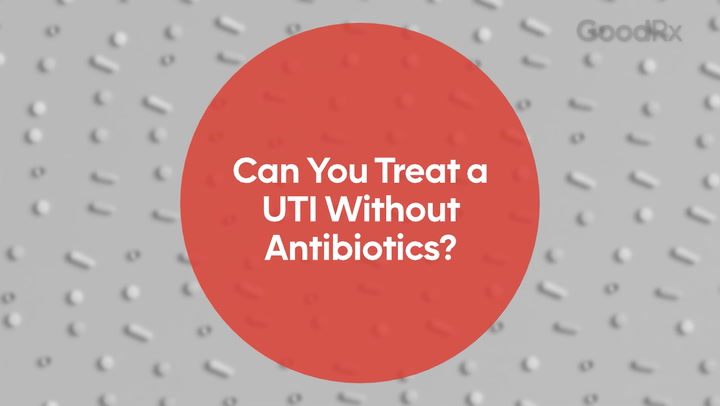
Does Mono Go Away?
Key takeaways:
While there’s no cure for mononucleosis (mono), there are many treatments to minimize uncomfortable symptoms.
Mono symptoms eventually go away, but in some cases it can be contagious for up to 6 months or more.
The virus that commonly causes it — Epstein-Barr virus — remains in the body forever without causing symptoms.
For most people, mono eventually resolves without any issues. But for some, it can cause serious complications.

You’ve probably heard about the “kissing disease,” also called mono (infectious mononucleosis). There are lots of stories about it keeping you in bed for a month and leaving you feeling wiped out. The fact of that matter is that its symptoms can last for a frustratingly long time. But however long the symptoms last (usually 2 to 4 weeks), it does eventually go away. And the good news is, you’ll usually recover from mono without any major issues. But there are a few warning signs to look out for.
Does the Epstein-Barr virus ever go away?
So your mono symptoms have improved, but are you out of the woods yet? Even after you recover from mono, the virus that most commonly causes it — EBV — stays in your body. But it goes into a state of dormancy (sleep), where it lives quietly in a few cells without causing any harm. This is because the immune system has developed antibodies (special immune system proteins) to keep the virus in check. Then, every few years, EBV may reactivate without you having any symptoms. The only thing is that you may become contagious again without being aware of it.
In some cases, a person will have multiple mono infections with full-on symptoms. If that happens, there’s a possibility they have another serious condition, like AIDS, or other conditions or medications that weaken the immune system.
Treatment for mono
Scientists haven’t yet discovered a cure for mononucleosis. So treatments are focused on helping you feel as comfortable as possible while your body deals with the infection.
Tips for feeling better
While the amount of time you have mono can’t be shortened, it doesn’t have to be miserable. Here are a few things that can make you feel better:
Rest, hydration, and good nutrition: It may seem simple, but taking care of your body’s usual needs is the best way to help it recover. This is especially true when you’re sick. That’s because your body is working extra hard to fight the sickness — on top of all the other things it normally does.
Over-the-counter medications for fever and aches: Talk to your healthcare provider about taking fever-reducing medications like acetaminophen (Tylenol) or ibuprofen. But never take aspirin during a mono infection because it can cause a life-threatening illness called Reye’s syndrome, especially in children.
Antibiotics aren’t usually helpful against viruses. In the case of mono, certain antibiotics like amoxicillin, ampicillin, and cephalexin, can cause you to break out in a rash.
What happens if mono goes untreated?
If you’re healthy, your immune system will usually help keep EBV at bay. Mono symptoms in most healthy individuals will resolve over 2 to 4 weeks without any of the treatments listed above. In the rare case you experience a complication from mono, you’ll need to see a healthcare provider right away for treatment.
WHAT TO READ NEXT
Popular stories this week
Is mono serious?
Some serious complications, like splenic rupture or airway compromise, can happen very quickly. And others, like hemolytic anemia or hepatitis, slowly build up over the course of your mono infection. But, whether fast or slow, they’re all dangerous.
Here’s a little more information about these complications:
Splenic rupture: Mono may cause your spleen to enlarge, which makes it fragile. If you experience any kind of high-impact force to your torso, your spleen can rupture and cause internal bleeding. This is why it’s best to avoid sports or high impact activities while you have mono.
Airway compromise: EBV can infect cells in your throat and cause swelling. If your tonsils or the lymph nodes in your neck get too swollen they can block your airway, which makes it difficult to breathe.
Hemolytic anemia: This is a condition where your immune system destroys your red blood cells (RBCs). Anemia (low RBC count) doesn’t let your body get all the oxygen it needs and can make you feel tired.
Hepatitis: EBV can cause hepatitis, or inflammation of the liver tissue. You may experience abdominal pain, or it can cause jaundice (a yellowing of the skin and eyes) if the liver damage is bad enough.
Signs you should see a healthcare provider
If you’ve recently been diagnosed with mono, there are some warning signs that mean you’ll need to see your healthcare provider, including:
Difficulty breathing or trouble swallowing
Dizziness
Confusion
Sharp pain in your left side
Chest pain
Easy bruising or bleeding
Extra paleness of the skin
Yellowing of the skin or eyes
Dark urine
Increase in weakness of the arms or legs
Symptoms of mono that continue to persist past 8 weeks
Does mono cause chronic fatigue?
Most of the worst of your mono symptoms have improved, it’s been way past 4 weeks since it started, and you’re still tired. You’re not alone. Up to 9% to 12% of adults have had lingering symptoms of mono 6 months after a mono infection. And a small percentage of adolescents (4%) have been reported to have chronic fatigue syndrome (CFS) up to 2 years after a mono infection.
CFS is a condition where someone can experience extreme fatigue even after simple activities, and the fatigue doesn’t improve with rest. Sometimes EBV is thought to play a role in causing it, but the exact reason why isn’t known yet. Some studies have shown that the severity of initial mono symptoms can increase the chance of developing CFS. Newer research shows that parts of the EBV virus may cause CFS in a subset of people who have it.
What about EBV reactivation years later? It can happen — but not necessarily in everyone.
If you think you may have symptoms of CFS, the first step is to make sure there aren’t other causes for your fatigue, like hypothyroidism, depression, or anemia. A visit to your provider’s office can help you rule out other possible causes and determine the next steps.
The bottom line
Even if it takes more than a month, rest assured that eventually mono will go away. But if you don’t do anything about it, you might feel pretty terrible while you’re waiting for it to resolve. The best thing to do is rest and take over-the-counter medications as needed to treat your symptoms. Most of the time, mono isn’t very dangerous, but it does come with a small risk of serious complications that need further treatment. You’ll also need to visit a healthcare provider if your fatigue lasts longer than a few months.
References
Anders Fugl, A., a et al. (2019). Epstein-Barr virus and its association with disease - A review of relevance to general practice. BioMed Central Family Practice.
Ariza, M. E., et al. (2021). Myalgic encephalomyelitis/chronic fatigue syndrome: The human herpesviruses are back! Biomolecules.
Banerjee, I., et al. (2014). Azithromycin-induced rash in a patient of infectious mononucleosis – A case report with review of literature. Journal of Clinical and Diagnostic Research.
Blomberg, J., et al. (2019). Antibodies to human herpesviruses in myalgic encephalomyelitis/chronic fatigue syndrome patients. Frontiers in Immunology.
Centers for Disease Control and Prevention. (2020). Epstein-Barr virus and infectious mononucleosis.
Dematapitiya, C., et al. (2019). Cold type autoimmune hemolytic anemia - A rare manifestation of infectious mononucleosis; serum ferritin as an important biomarker. BMC Infectious Diseases.
Dunmire, S. K., et al. (2015). Infectious mononucleosis. Current Topics in Microbiology and Immunology.
Jason, L. A., et al. (2014). Predictors of post-Infectious chronic fatigue syndrome in adolescents. Health Psychology and Behavioral Medicine.
Katz, B. Z., et al. (2009). Chronic fatigue syndrome after infectious mononucleosis in adolescents. Pediatrics.
MedlinePlus. (2021). Jaundice.
Mohseni, M., et al. (2021). Mononucleosis. StatPearls.
National Health Service. (2019). Reye’s syndrome.
Vine, L. J., et al. (2012). Characteristics of Epstein–Barr virus hepatitis among patients with jaundice or acute hepatitis. Alimentary Pharmacology and Therapeutics.







